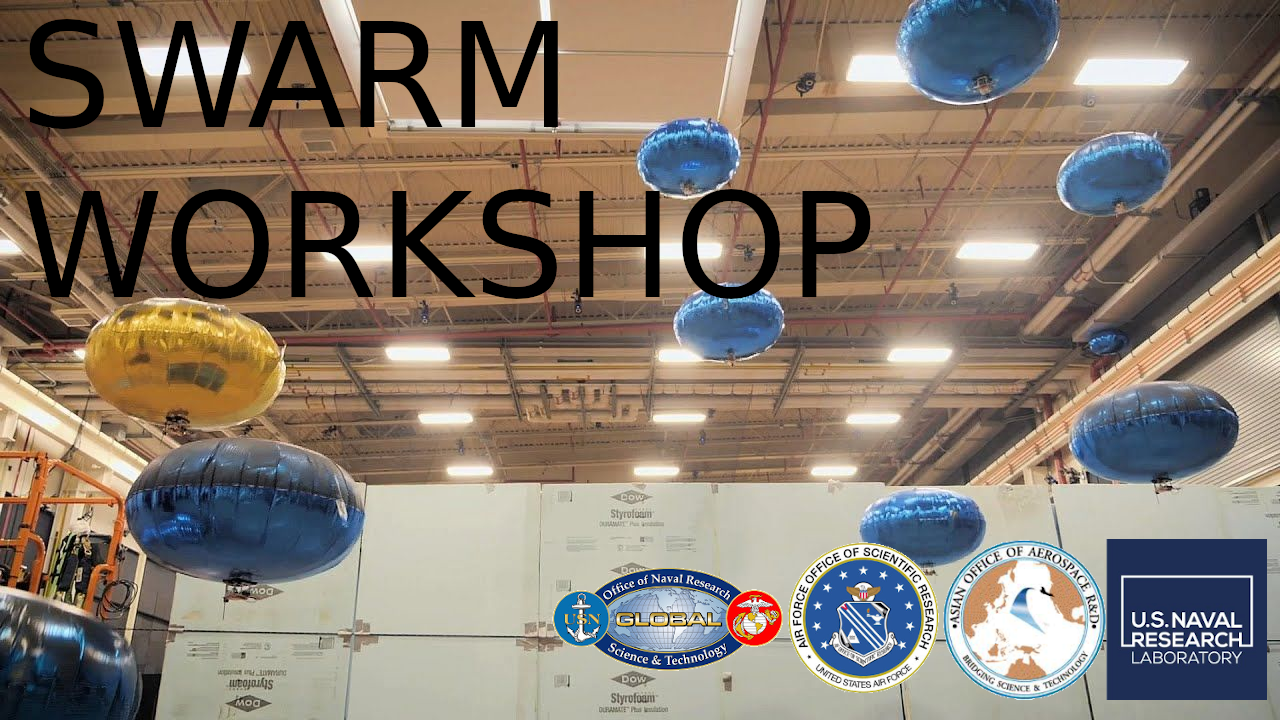Workshop on Robotic Swarms and Emergent Behavior at the 18th IEEE-RAS International Conference on Ubiquitous Robots Gangwon-do, S. Korea and Online (Hybrid) – Wednesday, July 14th, 2021
Swarm systems are largely comprised of simple individual elements which are able to self-organize and coordinate themselves in a decentralized manner. In particular, this field focuses on the collective behavior which emerges from the local interaction between the elements of the swarm as well as with their environment. Swarm Intelligence is more formally defined in literature as “the study of how large numbers of relatively simple physically embodied agents can be designed such that a desired collective behavior emerges from the local interactions among agents and between the agents and the environment.”
Swarm Intelligence is a highly multi-disciplinary field, drawing from:
- Biology: fish schools, starling flocks, bee swarms, ants, etc
- Physics: particles, dynamic systems, complex adaptive systems, etc
- Game theory
- Artificial Intelligence / Machine Learning
- Robotics: The main characteristics of a swarm robotics system are outlined in literature as the following:
- robots are autonomous;
- robots are situated in the environment and can act to modify it;
- robots’ sensing and communication capabilities are local;
- robots do not have access to centralized control and/or to global knowledge;
- robots cooperate to tackle a given task
A few major questions surrounding swarms and emergent behaviors, these are 1) how can you objectively measure trust between two or more agents, 2) how to create an emergent behavior, 3) what are the appropriate logistical methods to be used for robotic swarms in the field 4) how can we leverage artificial intelligence and machine learning to create and define an emergent behavior, 5) what are the security issues specific to swarms and emergent behaviors, and 6) are there standard testbeds or methodologies that should be shared by the research community to advance a common understanding of swarms and emergent behavior.
This workshop will feature handpicked experts in the pertaining fields to give lectures covering these topics. This workshop will also accept paper submissions by researchers on this topic. Authors of the top papers will have a chance to present their work via an oral presentation and/or a poster session. It is currently planned to have a total of four to six invited speakers and up to five top paper presentations. The number of poster presentations will depend on the quality of submitted documents. It is currently planned to have three of the invited speakers and two top papers presented in the morning session followed by an independent lunch. The afternoon session will start off with a fourth invited speaker and three more top paper presentations. Finally there will be a 30 minute moderated discussion with the goal of answering the question “What is a Swarm”. This session be followed by closing remarks. The workshop will be a synchronous in-person and virtual workshop. The primary goals of this workshop are to continue the international dialog on swarm robotics and emergent behavior research, encourage discussion across disciplines, and identify important future research questions to advance the study of swarms and emergent behavior in robotics, autonomous systems, and artificial intelligence. It will serve as an international extension to previous workshops held in the US and in Japan/Virtually, which assisted in defining a forward-looking research agenda of interest to potential sponsors, and fostered awareness and coordination across related research efforts (Atkinson, Friedland, & Lyons, 2012; Gratch, Friedland, & Knott, 2015, Lofaro, Knott, Steckman, & Chen, 2020)
An additional desired outcome of this workshop is to promote research relationships between the U.S. and the rest of the world. To facilitate this we will also have a dedicated time to allow non-U.S. researchers to propose, or “pitch,” projects that they think would be appropriate to be funded as a U.S. and non-U.S. collaboration. These pitches will be done in a private setting and are planned to occur during the poster session.



